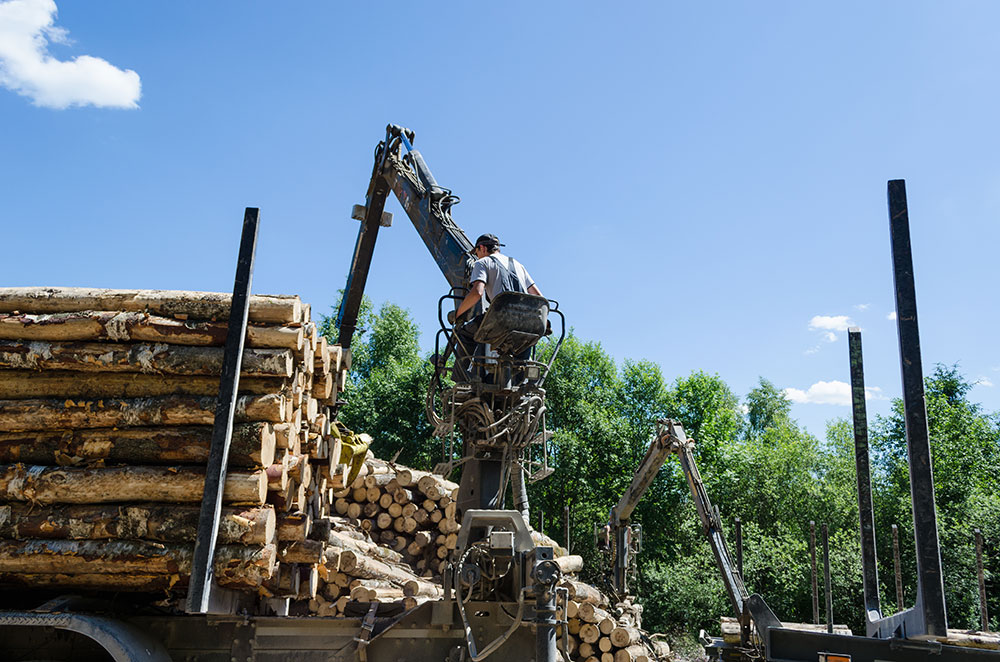Disclaimer: The information on our website is provided for general information purposes only. We make no representations or warranties of any kind, express or implied, about the completeness, accuracy, reliability, suitability or availability with respect to the website or the information contained on our website for any purpose. Any reliance on such information is therefore strictly at your own risk and we are not liable for any damages or losses arising out of or resulting from your reliance on any information contained on our website.
Logging workers harvest trees so the wood and other raw material can be used to make everyday products. This can be dangerous work as logging workers may find themselves cutting down trees and moving the timber from one location to another, so safety is extremely important in this industry. Watch a video to learn what a logging worker does.
How to Become a Logging Worker
Logging workers learn on-the-job, so a high school diploma should provide the education necessary to gain a job. Once at work, you would learn how to operate the machinery used to log and the safety procedures your employer requires. You may also be required to gain your certification in a state-recognized safety program as well. In addition, your state may offer training on environmental compliance and reforestation. If you’d like to advance your career, you could research vocational schools or community colleges that offer programs in forest technology.
Job Description of a Logging Worker
Along with cutting down trees, a logging worker may need to chop or cut a log into smaller pieces so they can be transported. They may also hoist logs onto trucks that will deliver the logs to paper mills, lumber yards, or other factories. Logging workers would also be able to recognize various species of trees and be able to give a quality grade score to each log.
It is also likely that a logging worker would need to operate heavy equipment such as chain saws, trimmers, tree harvesters, and tractors just to name a few. They must inspect the equipment they are using and maintain the equipment to ensure it is safe to use. Some workers climb trees. These workers must use unique gear to scale the tree and use the necessary safety equipment to prevent a fall. These workers would need to carry heavy tools up the tree with them.
Logging Worker Career Video Transcript
Whether their boots are in the lumberyard or spiked into a tree high above the ground, logging workers know the value of the trees they harvest. The timber they take provides the raw material for hundreds of products for home and business use. Logging workers include several categories: Fallers cut down trees with chain saws and axes, then cut them into measured lengths.
Logging equipment operators use heavy machinery for the same tasks. They move the logs to be loaded for transport, and pull stumps and clear brush if required. Log graders and scalers inspect logs to estimate their value. They enter data about trees on hand-held devices, and grade the lumber in the yards where logs are collected before shipping. Logging worker supervisors have years of experience in the field. They train workers, assign jobs, and solve on-site problems to ensure compliance with regulations.
Working around falling trees and heavy equipment, logging requires a balance of quick, intelligent decision-making and an appetite for physical work. Workers spend all their time outdoors… often climbing and lifting… sometimes in poor weather. The hazards of logging require rigorous safety practices and equipment. Work is usually more available in warmer months, and maybe located in remote, isolated sites. A significant number of logging workers are self-employed. While many logging workers have a high school education, almost all learn on the job.
Article Citations
Bureau of Labor Statistics, U.S. Department of Labor, Occupational Outlook Handbook, Logging Workers.
The career video is in the public domain from the U. S. Department of Labor, Employment and Training Administration.

